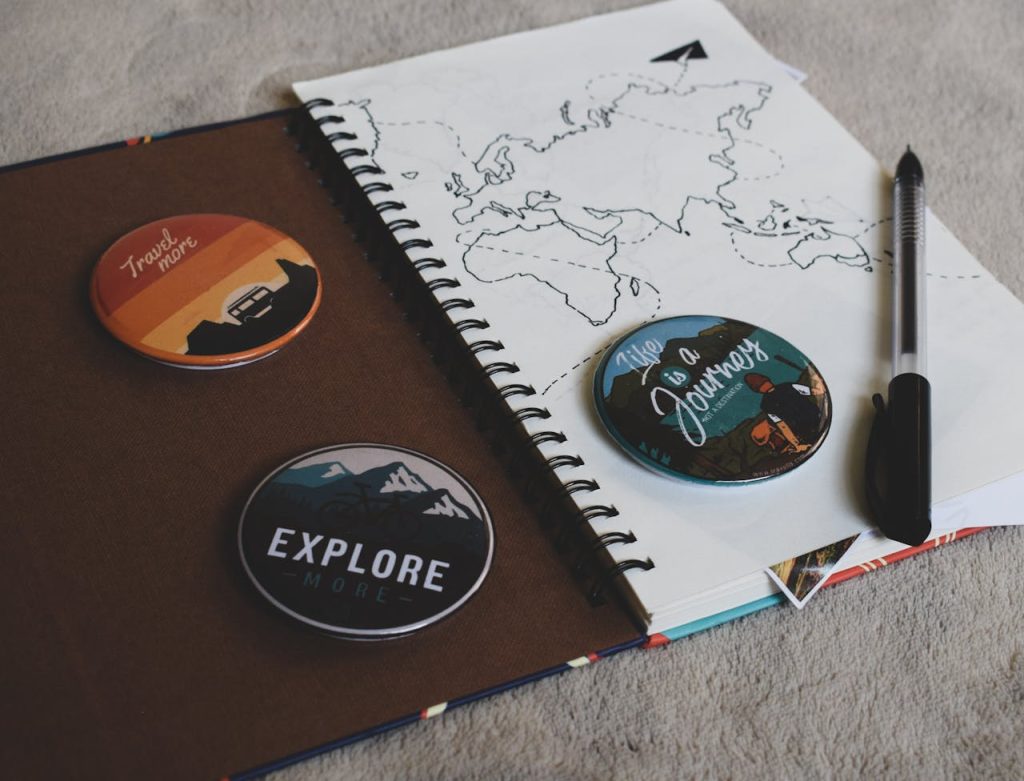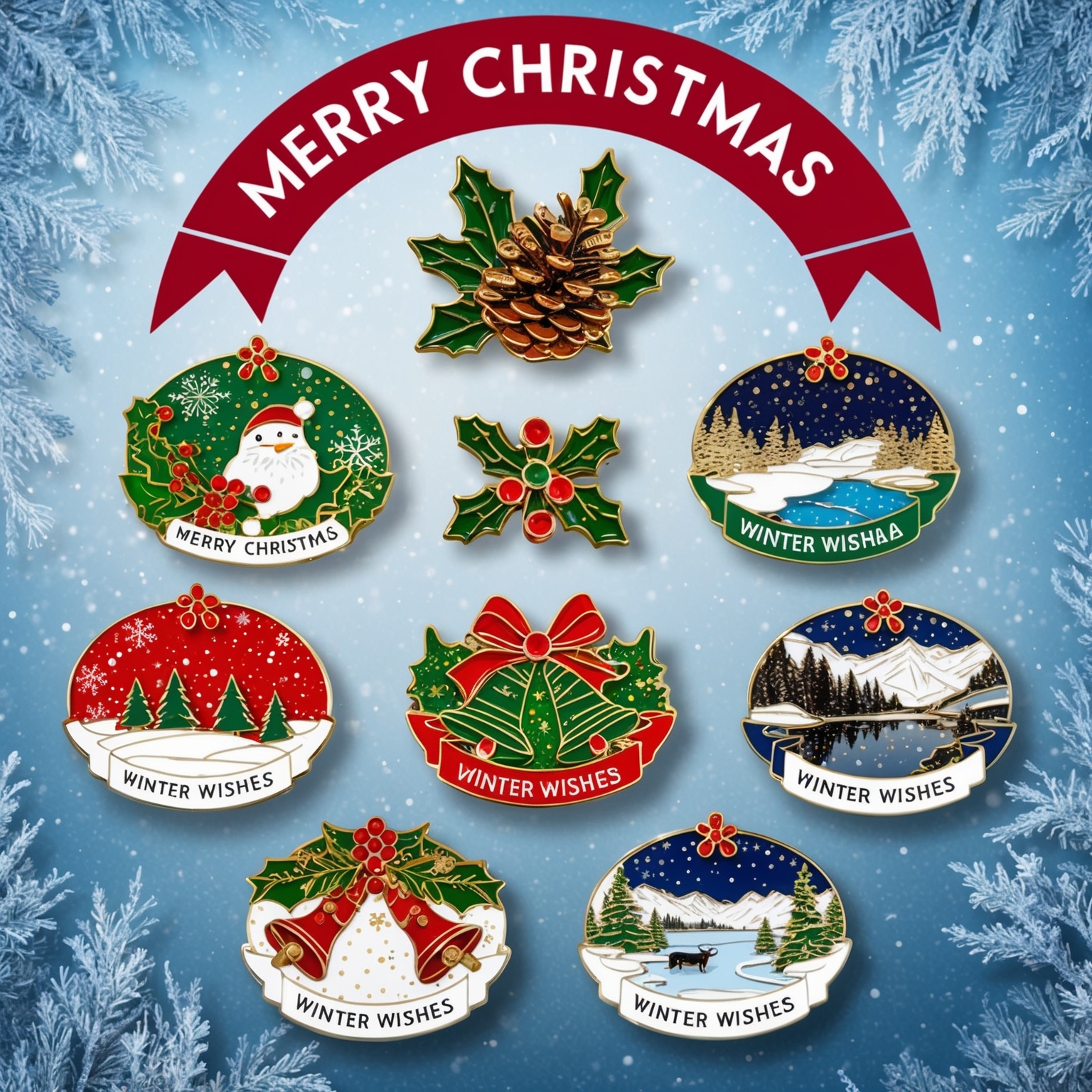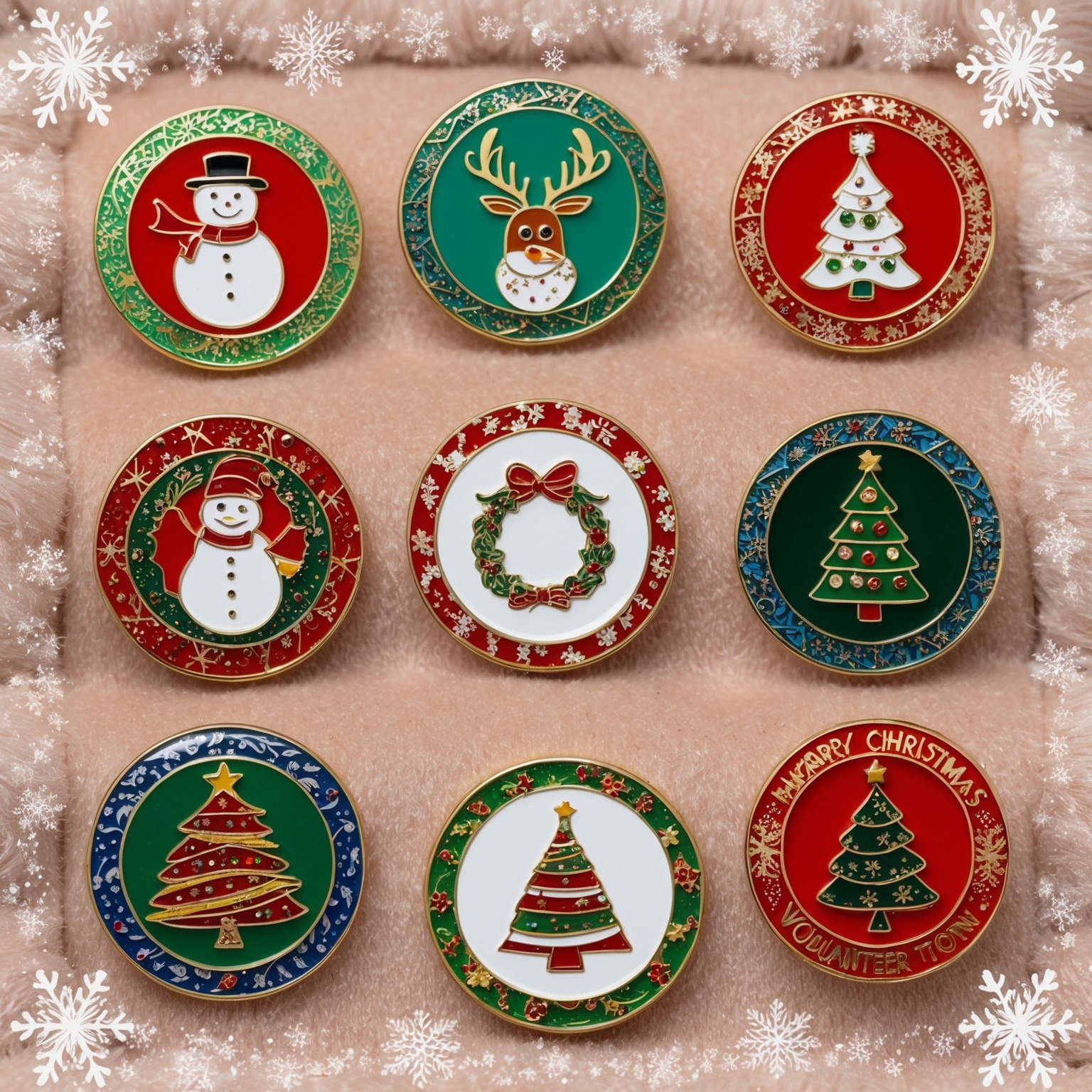Collecting event lapel pins is a hobby that offers a unique blend of history, personal significance, and artistic expression. These small yet powerful symbols capture moments in time, commemorating special events, milestones, and experiences. For collectors, event lapel pins are not just pieces of metal; they are tangible connections to the past, memories of significant occasions, and markers of personal achievements. Whether you’re a seasoned collector or someone new to the world of lapel pins, exploring the art of collecting event lapel pins can open up a world of discovery and appreciation.
In this article, we will delve into the fascinating world of event lapel pins, examining their historical significance, the personal value they hold, and the reasons why they have become cherished collectibles for so many people. We will also provide insights into the best practices for starting and maintaining a collection, tips for finding rare and valuable pins, and ways to preserve and display your collection. By the end, you’ll have a deeper understanding of the art of collecting event lapel pins and why they are more than just decorative items—they are pieces of history and personal milestones.
The Historical Significance of Event Lapel Pins
Event lapel pins have a long and storied history, with roots that go back centuries. Originally used as symbols of allegiance, identification, and honor, lapel pins have evolved over time to become commemorative items that mark important events and milestones. Understanding the historical context of event lapel pins can deepen your appreciation for these collectibles and the stories they tell.
The Origins of Event Lapel Pins
The concept of using pins to commemorate events dates back to ancient times when people would wear badges or emblems to signify their participation in religious ceremonies, military campaigns, or political movements. These early pins were often made of precious metals and adorned with intricate designs, symbolizing the importance of the event and the status of the wearer.
During the medieval period, knights and noblemen would wear badges to show their loyalty to a particular monarch or cause. These badges often featured the emblem of the ruling house or a symbol of the knight’s order, serving as both a sign of allegiance and a mark of honor. As time went on, the use of pins and badges spread to other areas of society, including fraternal organizations, guilds, and military units.
The modern concept of event lapel pins began to take shape in the 19th and 20th centuries, as societies became more organized and formalized. Events such as world’s fairs, political campaigns, and sporting competitions started to produce commemorative pins as souvenirs and symbols of participation. These pins were often given to attendees, participants, and officials as a way to commemorate the event and create a lasting memory.
The Evolution of Event Lapel Pins in the 20th Century
The 20th century saw a significant evolution in the design, production, and popularity of event lapel pins. Major events such as the Olympic Games, world wars, and international expositions played a key role in the development of lapel pins as collectible items.
During the early 20th century, the Olympic Games became a driving force in the popularity of event lapel pins. Athletes, officials, and dignitaries would exchange pins as a gesture of goodwill and camaraderie, leading to the emergence of pin trading as a global phenomenon. The tradition of Olympic pin trading has continued to this day, with collectors from around the world eagerly seeking out rare and valuable pins from different Olympic Games.
World War I and World War II also contributed to the popularity of event lapel pins, as military units and governments produced pins to boost morale, raise funds, and commemorate significant battles and campaigns. These pins often featured patriotic symbols, such as flags, eagles, and military insignia, and were worn by soldiers, civilians, and supporters alike.
In the post-war era, event lapel pins became increasingly popular as souvenirs from international expositions, world’s fairs, and major sporting events. Pins from events such as the 1939 New York World’s Fair, the 1952 Helsinki Olympics, and the 1964 Tokyo Olympics became highly sought-after collectibles, cherished for their historical significance and artistic design.
As the century progressed, event lapel pins continued to be produced for a wide range of occasions, including political campaigns, corporate events, music festivals, and cultural celebrations. The accessibility and affordability of lapel pins made them a popular choice for commemorating important events, and their collectible nature ensured that they would be treasured for years to come.
The Personal Value of Event Lapel Pins
While the historical significance of event lapel pins is undeniable, their personal value is what truly makes them special for collectors. Each pin represents a unique memory, experience, or achievement, making them deeply meaningful to the individual who owns them. For many collectors, event lapel pins are not just objects; they are symbols of personal milestones, cherished moments, and connections to the past.
Commemorating Personal Milestones
One of the most significant aspects of collecting event lapel pins is the ability to commemorate personal milestones. Whether it’s attending a major sporting event, participating in a charity run, or celebrating a career achievement, event lapel pins serve as tangible reminders of these important moments in life.
For example, a runner who completes their first marathon might receive a custom lapel pin featuring the race’s logo and the year of the event. This pin becomes a symbol of their dedication, perseverance, and accomplishment, serving as a lasting reminder of the effort they put in to achieve their goal.
Similarly, professionals who attend industry conferences or receive recognition for their work often receive lapel pins as tokens of their achievements. These pins can represent years of hard work, dedication, and success, making them highly meaningful to the individuals who receive them.
Building Connections and Memories
Event lapel pins also have a unique ability to build connections and create memories. When you wear or display a pin from a significant event, it often sparks conversations and connections with others who share similar experiences or interests.
For example, a collector who wears a lapel pin from the 1980 Lake Placid Winter Olympics might meet someone who also attended the event or who shares a passion for Olympic history. These connections can lead to meaningful conversations, friendships, and even opportunities to expand one’s collection.
In addition to creating connections with others, event lapel pins can also serve as personal reminders of special experiences and the people you shared them with. For instance, a pin from a music festival might remind you of the friends you attended the event with, the bands you saw, and the memories you made together. These pins become more than just collectibles; they become symbols of the moments and relationships that shape your life.
Expressing Identity and Personal Interests
Collecting event lapel pins is also a way to express your identity and personal interests. Each pin in your collection represents something that is meaningful to you, whether it’s a passion for sports, a love of travel, or an interest in history.
For example, a collector who is passionate about space exploration might have a collection of lapel pins from NASA missions, each representing a different milestone in the history of space travel. These pins not only showcase the collector’s interest in space but also serve as a way to share that passion with others.
Similarly, a collector who enjoys attending music festivals might have a collection of pins from various festivals, each representing a unique experience and a favorite band or artist. These pins become a way to express their love of music and the joy they find in live performances.
By curating a collection of event lapel pins that reflect your interests and experiences, you create a visual representation of who you are and what you value. This makes each pin in your collection a deeply personal and meaningful item.
The Art of Collecting Event Lapel Pins
Collecting event lapel pins is both an art and a science. It requires a combination of knowledge, passion, and careful curation to build a collection that is not only valuable but also meaningful. Whether you’re just starting out or looking to enhance your existing collection, here are some tips and best practices for collecting event lapel pins.
Starting Your Collection: Tips for Beginners
If you’re new to collecting event lapel pins, the first step is to decide what type of pins you want to collect. There are countless options to choose from, including pins from sporting events, political campaigns, music festivals, corporate events, and more. Consider what interests you most and start by focusing on a specific theme or category.
For example, if you’re a sports fan, you might start by collecting pins from major sporting events like the Olympics, World Cup, or Super Bowl. If you’re interested in history, you might focus on collecting pins from significant historical events, such as world’s fairs, political campaigns, or military anniversaries.
Once you’ve decided on a theme, start by researching the pins that are available within that category. Online marketplaces, collector forums, and specialized dealers are great places to find event lapel pins for sale. As you begin to acquire pins, pay attention to the condition, authenticity, and provenance of each piece. Pins in excellent condition, with original packaging or documentation, are generally more valuable and desirable.
It’s also important to set a budget for your collection. While some event lapel pins can be quite affordable, others, especially rare or historically significant pins, can be more expensive. By setting a budget and sticking to it, you can build your collection gradually without overspending.
Finding Rare and Valuable Event Lapel Pins
As your collection grows, you may want to start seeking out rare and valuable event lapel pins. These pins are often harder to find and can command higher prices, but they also add significant value and prestige to your collection.
One of the best ways to find rare pins is by attending collector shows, auctions, and events where dealers and other collectors gather to buy, sell, and trade pins. These events provide an opportunity to see pins in person, ask questions, and negotiate prices. You may also discover pins that are not available online or through other channels.
Another way to find rare pins is by networking with other collectors. Joining collector clubs, online forums, and social media groups can connect you with people who share your interests and may have pins to trade or sell. Building relationships with other collectors can also provide valuable insights and tips on where to find rare and valuable pins.
When seeking out rare pins, it’s important to verify their authenticity and provenance. Counterfeit or reproduction pins are not uncommon, so be cautious and do your research before making a purchase. Ask for documentation, such as certificates of authenticity, and consult with experts if you’re unsure about a pin’s legitimacy.
Preserving and Displaying Your Collection
Once you’ve started building your collection of event lapel pins, it’s important to take steps to preserve and display them properly. Proper care will ensure that your pins remain in excellent condition and retain their value over time.
To preserve your pins, store them in a cool, dry place away from direct sunlight, moisture, and dust. Avoid handling them with dirty or oily hands, as this can cause damage or tarnish the metal. If your pins come with original packaging, such as boxes or cards, keep them intact and store them together with the pins.
Displaying your collection is a great way to enjoy and showcase your pins. There are several creative ways to display event lapel pins, including framed displays, shadow boxes, and custom pin boards. When arranging your pins, consider grouping them by theme, event, or chronology to create a visually appealing and organized display.
If you prefer a more portable option, you can also display your pins in a pin book or album. These albums are designed specifically for pin collectors and feature pages with clear pockets that hold and protect your pins while allowing you to flip through and view your collection.
Documenting Your Collection
As your collection grows, it’s a good idea to document each pin to keep track of its details and provenance. This can be done using a physical journal, a spreadsheet, or specialized collection management software.
When documenting your pins, include information such as the event or occasion the pin commemorates, the date it was produced, its condition, and any relevant provenance or documentation. You may also want to include photos of each pin, especially if they are rare or valuable.
Documenting your collection not only helps you stay organized but also adds to the historical and personal value of your pins. It provides a record of your collecting journey and ensures that future generations can appreciate and understand the significance of each piece.
Exploring the World of Event Lapel Pins
The world of event lapel pins is vast and diverse, offering something for every collector. Whether you’re interested in sports memorabilia, political history, corporate branding, or cultural events, there are countless pins to discover and add to your collection.
Olympic and Sporting Event Pins
Olympic pins are among the most popular and widely collected event lapel pins. Each Olympic Games produces a new set of pins, featuring everything from the host city’s emblem to individual sports, mascots, and national flags. Olympic pin trading is a time-honored tradition, with collectors from around the world seeking out rare and valuable pins from past games.
In addition to the Olympics, other major sporting events, such as the FIFA World Cup, Super Bowl, and World Series, also produce collectible pins. These pins often commemorate specific games, teams, or players and are highly prized by sports fans and memorabilia collectors.
Political and Historical Event Pins
Political and historical event pins are another popular category for collectors. These pins often commemorate significant events, such as presidential campaigns, civil rights movements, and military anniversaries. For example, pins from the 1963 March on Washington, the 1964 Civil Rights Act, or the 1944 D-Day landings are highly sought after for their historical significance.
Political campaign pins, in particular, are a staple of American history, with candidates and their supporters using pins to promote their platforms and rally voters. Collectors of political pins often seek out rare or unique designs, such as those from early 20th-century campaigns or third-party candidates.
Corporate and Brand Event Pins
Corporate and brand event pins are another interesting area of collecting, especially for those interested in the history of business and advertising. Companies often produce pins to commemorate significant milestones, such as anniversaries, product launches, or corporate events. These pins not only represent the company’s history but also reflect the evolution of branding and marketing over time.
For example, Coca-Cola, Disney, and Harley-Davidson are just a few of the iconic brands that have produced collectible pins over the years. These pins often feature the company’s logo or mascot and are highly prized by collectors of advertising memorabilia.
Music and Pop Culture Event Pins
Music and pop culture event pins are a fun and vibrant category of collecting, appealing to fans of all ages. These pins often commemorate concerts, music festivals, and pop culture conventions, featuring designs inspired by bands, artists, movies, and TV shows.
For example, fans of bands like The Beatles, The Rolling Stones, or Grateful Dead often collect pins from concerts and tours, while fans of comic books or sci-fi franchises may seek out pins from events like San Diego Comic-Con. These pins not only capture the spirit of the event but also serve as a way for fans to express their love for their favorite artists and shows.
Conclusion: The Enduring Appeal of Event Lapel Pins
Event lapel pins are much more than just decorative items—they are pieces of history, symbols of personal achievement, and markers of important moments in time. For collectors, these pins offer a unique and rewarding way to connect with the past, celebrate personal milestones, and express their identity and interests.
Whether you’re just starting your collection or have been collecting for years, the world of event lapel pins offers endless possibilities for discovery and appreciation. By exploring the historical and personal value of these pins, you can deepen your understanding of their significance and build a collection that is both valuable and meaningful.
As you continue your journey into the art of collecting event lapel pins, remember that each pin tells a story—of a place, a time, an experience, or an achievement. By preserving and sharing these stories, you contribute to the rich tapestry of history and ensure that these small but powerful symbols are cherished for generations to come.
If you are interested in buying high quality custom trading pins, you can call us at 1-800-641-1299 or fill out a FREE quote form.







